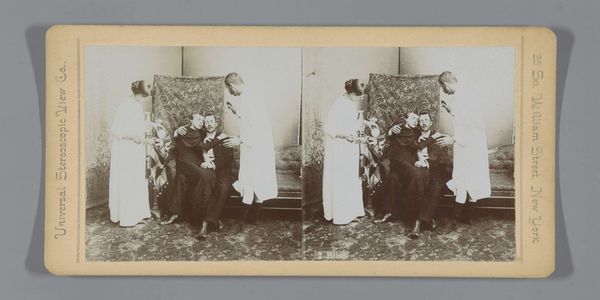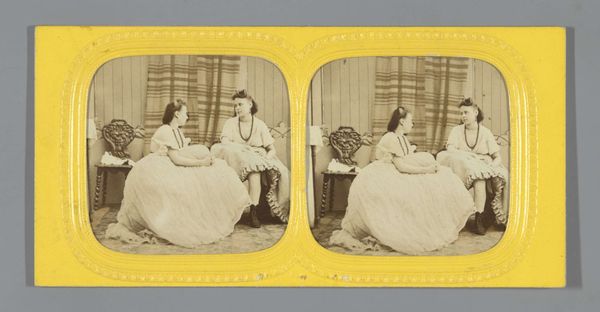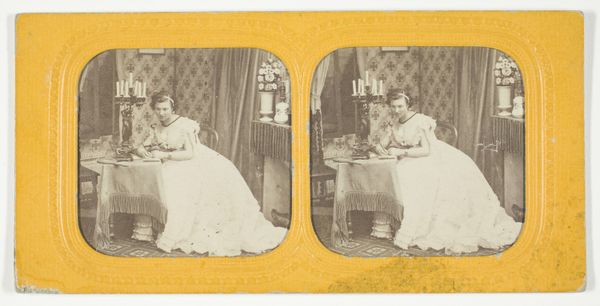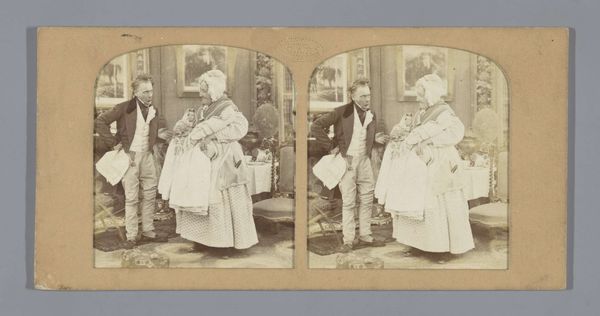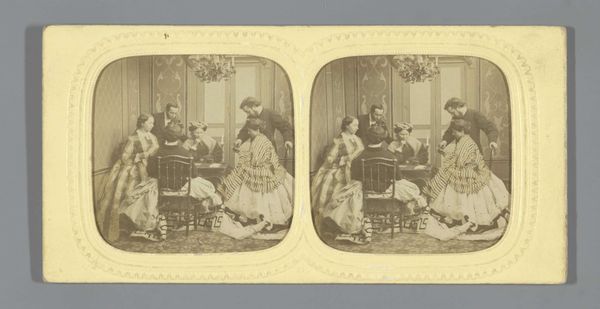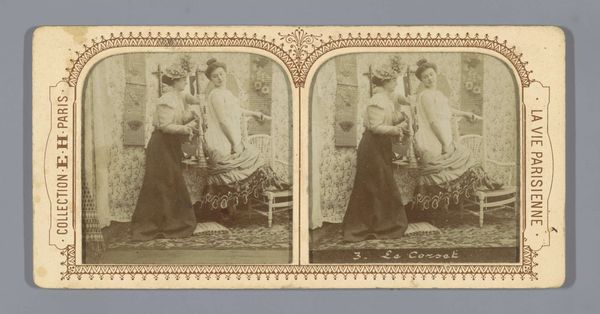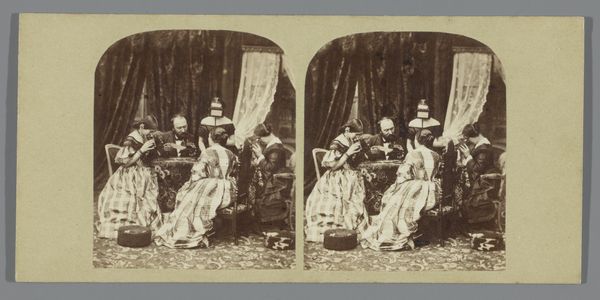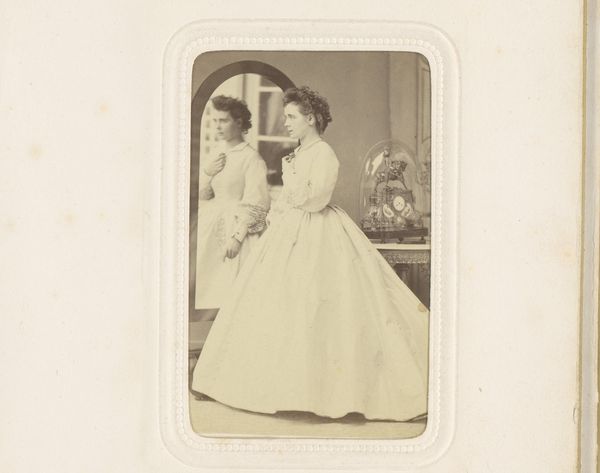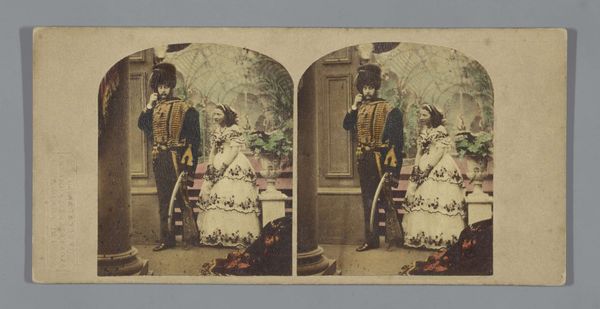
Dimensions: height 87 mm, width 177 mm
Copyright: Rijks Museum: Open Domain
Curator: Here we have an interesting example of early photography entitled "Paar waarvan man in historische kleding," which translates to "Couple with man in historical clothing," dating from somewhere between 1860 and 1870 and attributed to Anatole Pougnet. What are your immediate impressions? Editor: My eye is drawn to the way the light falls across her dress. There's a beautiful gradation, almost sculptural in how it defines the folds of the fabric. The texture alone creates visual interest in what otherwise seems to be quite standard subject matter for its time. Curator: Indeed. Let's consider the means of production, though. This photograph was likely produced using the carte de visite format, small photographic prints mounted on card stock, a hugely popular and affordable medium during the mid-19th century. Its mass production is crucial for understanding its appeal to a wide range of consumers. The labor and consumption around these types of photographic portraits speak to new economies and material exchanges within French society. Editor: I see your point about democratization of portraiture through mass production; however, the aesthetic choices here are intriguing. The backdrop looks almost painted, blurring the lines between theatricality and reality. And the soft focus creates this wonderfully hazy, dreamlike quality overall, wouldn't you say? It leans toward Romantic ideals even with this modern process. Curator: Yes, and consider their staged costumes, perhaps hired for the occasion! What does it mean to *perform* historical identity, to partake in costumed reenactment within the rapidly shifting social landscapes of the time, when photography allowed these fictions to enter homes on affordable terms? This image hints at anxieties around the production of self, commodity, and class status during the early Second Empire period in France. Editor: That’s interesting. Though when you strip away the socio-historical dressing, I come back to the carefully constructed composition. The dark of his coat anchors the left side, creating this strong diagonal line that is balanced by her sweeping dress. The subtle gaze shared, that tender focal point...It speaks of more universal human conditions, like longing and the weight of social expectations. The artist made striking decisions. Curator: The material conditions enabled new forms of intimacy to circulate. But how are these notions of self, family and legacy caught within commodity forms? So, in this respect, can we read even that intimate glance outside structures of mass commercial appeal? Editor: Perhaps we meet somewhere in the middle— a tender moment made newly accessible as a reproducible format. I certainly see value in that combined view.
Comments
No comments
Be the first to comment and join the conversation on the ultimate creative platform.
